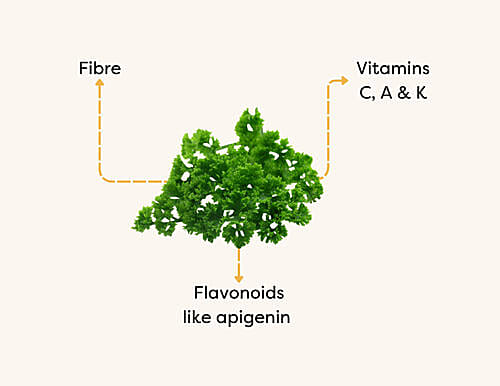Parsley to up your plant points
6th Jun 2024
Freshly picked parsley is more than a garnish – it adds a variety of phytochemicals and a fresh flavour to many dishes, sometimes even stealing the show.
Key points
Health Benefits
Adding fresh herbs like parsley to your meals could:
- Support your gut microbiota by exhibiting a ‘prebiotic’ effect.
- Add variety to your diet by adding ¼ plant point to your week.
- Lower cancer risk by increasing your intake of flavones, which are linked to a decreased risk of breast cancer, especially among post-menopausal women.
- Reduce your use of salt by adding flavour to a dish.
It’s a source of:
- Polyphenols, especially furanocoumarins and the flavone apigenin – of which parsley is one of the highest sources. They show promising benefits in the lab for regulating inflammation and boosting antioxidant defences.
- Vitamins C, A and K
- Fibre

How to enjoy
We love to use it in generous amounts, not just as a finishing sprinkle on top. I can form the backbone of many recipes, such as:
- Sauces – Vibrant Italian pesto, tangy Argentinian Chimichurri or earthy French Persillade.
- Salads – Middle Eastern tabbouleh or mixed into your favourite salad.
- Drinks in a green smoothie or relaxing herbal tea.
Top tip: Reduce waste by freezing chopped parsley with olive oil in ice cube trays.
